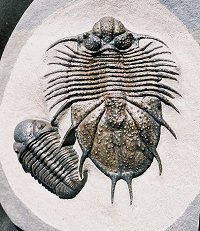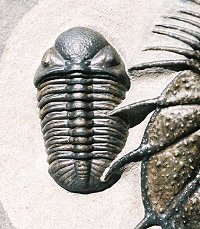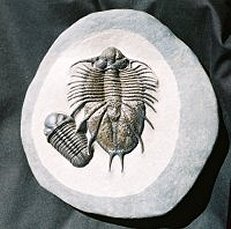|
Name: Acanthopyge sp. and Phacops new sp.
Age: Devonian
Formation: AM Limestone
Location: Morocco
Size: Acanthopyge is 3.3 inches long!
Price: SOLD
Specimen TTMACX1
|
This is a breathtaking trilobite fossil. It is a beautiful Acanthopyge and Phacops double from Morocco. Acanthopyge was composited from parts for years, because there had never been a complete specimen found. Over the past few years, though, a few complete ones have been unearthed, and this is one of them. This rare specimen was microscopically prepared in the EXTINCTIONS Preparation Lab here in Colorado, as are all of our Moroccan trilobites.
The preservation of both of these trilobites is exceptional - the fine pustulation of the Acanthopyge is even seen with the naked eye. The bug also has amazing natural coloration - the different shades of brown are simply beautiful and quite striking. The Phacops is a new species - much smoother and more primitive-looking than most Phacops. Both trilobites have thick shell exoskeletons that are beautifully preserved and exhibit incredible detail. The ancient arthropods are also very inflated and 3-dimensional, showcased in life-like fashion on the sculpted block of limestone. And that's not all - the trilobites died and were fossilized so close together that two of the Acanthopyge tailspines are actually laying right on top of the Phacops! This is not only an unique example of an extremely rare trilobite association, it is a spectacular display fossil - easily one of the most aesthetic trilobite specimens we have ever seen.
|





